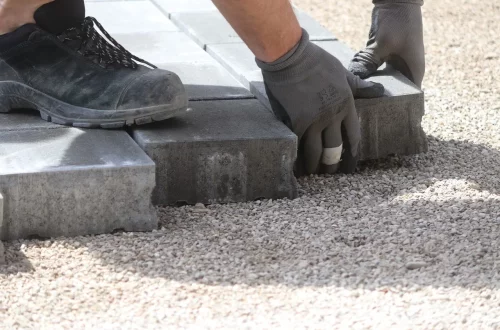
Effective Splints for Toes: A Guide to Relief and Support
Toes play a crucial role in our overall mobility and balance, yet they often endure a significant amount of stress due to various activities, footwear, and injuries. Whether it’s from a sports-related incident, a chronic condition like bunions, or simply the result of prolonged standing, toe discomfort can become a daily struggle. When traditional methods of relief, such as rest and ice, fail to alleviate the pain, splints can serve as an effective solution to provide much-needed support and healing.
Splints for toes are designed to stabilize the affected area, prevent further injury, and promote proper alignment. By immobilizing the toes, they can help reduce swelling and pain, allowing for a more comfortable recovery process. With various types of splints available on the market, it’s essential to understand their unique features and benefits to make an informed choice. Today, many people are turning to these supportive devices not only for injury recovery but also for managing chronic foot conditions.
As we delve into the world of toe splints, it becomes clear that these devices can significantly enhance comfort and mobility. The right splint can make a substantial difference in daily activities, from walking to exercising. Understanding the types of toe splints available, how to apply them correctly, and when to seek professional advice can empower individuals to take charge of their foot health.
Understanding the Different Types of Toe Splints
When it comes to selecting a toe splint, understanding the various types available is crucial. Each type is designed to address specific conditions or injuries, providing targeted support. The most common types of toe splints include buddy splints, rigid splints, and toe separators.
Buddy splints are typically used for injuries like fractures or sprains. They work by attaching the injured toe to an adjacent toe, providing stability and support while allowing some movement. This type of splint is often made from soft materials, making it comfortable for prolonged use. They are particularly beneficial for athletes who may experience toe injuries during sports activities, as they allow for a degree of mobility while still protecting the injured area.
Rigid splints are another option, usually made from hard plastic or metal. These splints offer maximum immobilization, making them ideal for severe injuries or post-surgical recovery. Rigid splints can prevent any movement of the toe, which is essential for healing in cases of fractures. While they provide excellent support, they may not be suitable for everyday use due to their bulkiness.
Toe separators are often used to alleviate discomfort caused by bunions, hammertoes, or overlapping toes. These devices are designed to fit between the toes, helping to realign them and reduce pressure. They can be particularly useful for individuals who spend long hours on their feet or wear tight footwear. Toe separators are often made from soft, flexible materials, ensuring comfort while providing effective relief.
Choosing the right type of splint involves considering the specific condition of your toes, the level of support required, and personal comfort. Consulting with a healthcare professional can help clarify the best option based on individual needs, ensuring that the splint provides the right balance of support and mobility.
How to Properly Apply and Use Toe Splints
Applying and using toe splints correctly is essential for maximizing their effectiveness. Improper use can lead to discomfort or exacerbate existing conditions. Here’s a step-by-step guide on how to apply and utilize toe splints effectively.
First, ensure that your feet are clean and dry. This helps to prevent any skin irritation or infection that could result from moisture trapped under the splint. If you’re using a buddy splint, gently place the injured toe next to the adjacent toe. Use medical tape or a soft cloth to secure the two together, ensuring that it’s snug but not too tight, as excessive pressure can cause circulation issues.
For rigid splints, follow the manufacturer’s instructions for application. Position the splint along the toe, securing it in place with straps or adhesive. It’s crucial to ensure that the splint does not restrict blood flow; you should be able to wiggle your toes slightly without pain. Adjust the splint as needed to find a comfortable fit.
When using toe separators, place them gently between the toes, ensuring they fit snugly but comfortably. They should not cause any pain or pressure. You can wear toe separators for various activities, including while relaxing at home or during light exercise.
To get the most benefit from your toe splint, it’s advisable to wear it consistently, especially during activities that may aggravate your condition. However, it’s also essential to listen to your body; if you experience increased pain or discomfort, remove the splint and consult a healthcare professional.
Regularly check the condition of the splint itself. If it becomes worn or damaged, it may need to be replaced to ensure continued effectiveness. Additionally, remember that while splints can provide support, they should be used in conjunction with other treatments as recommended by a healthcare provider for optimal recovery.
When to Seek Professional Help for Toe Issues
While toe splints can provide significant relief and support, there are instances when seeking professional help is necessary. Understanding when to consult a healthcare professional can prevent further complications and ensure effective treatment.
If you experience severe pain that does not improve with rest, ice, or over-the-counter medications, it’s time to seek medical advice. Persistent pain may indicate a more serious condition, such as a fracture or a ligament injury, that requires specialized treatment.
Additionally, if you notice swelling, bruising, or deformity in your toes, these are signs that you should consult a professional. While minor injuries may heal on their own, more severe conditions often require medical intervention, including imaging studies to assess the extent of the injury.
If you have an underlying condition, such as diabetes or circulatory issues, it’s especially important to seek advice for any toe-related problems. These conditions can complicate healing and increase the risk of serious complications if not managed properly.
Regular check-ups with a podiatrist can also help monitor the health of your feet and toes, especially if you have a history of foot problems. They can provide personalized recommendations for splinting and other treatments, ensuring that you receive comprehensive care.
In summary, while splints can offer substantial relief from toe pain and discomfort, they are not a substitute for professional medical advice. If you have concerns about your toe health, don’t hesitate to reach out to a healthcare provider.
**Disclaimer:** This article is for informational purposes only and does not constitute medical advice. Always consult a healthcare professional for medical concerns or treatment options.




